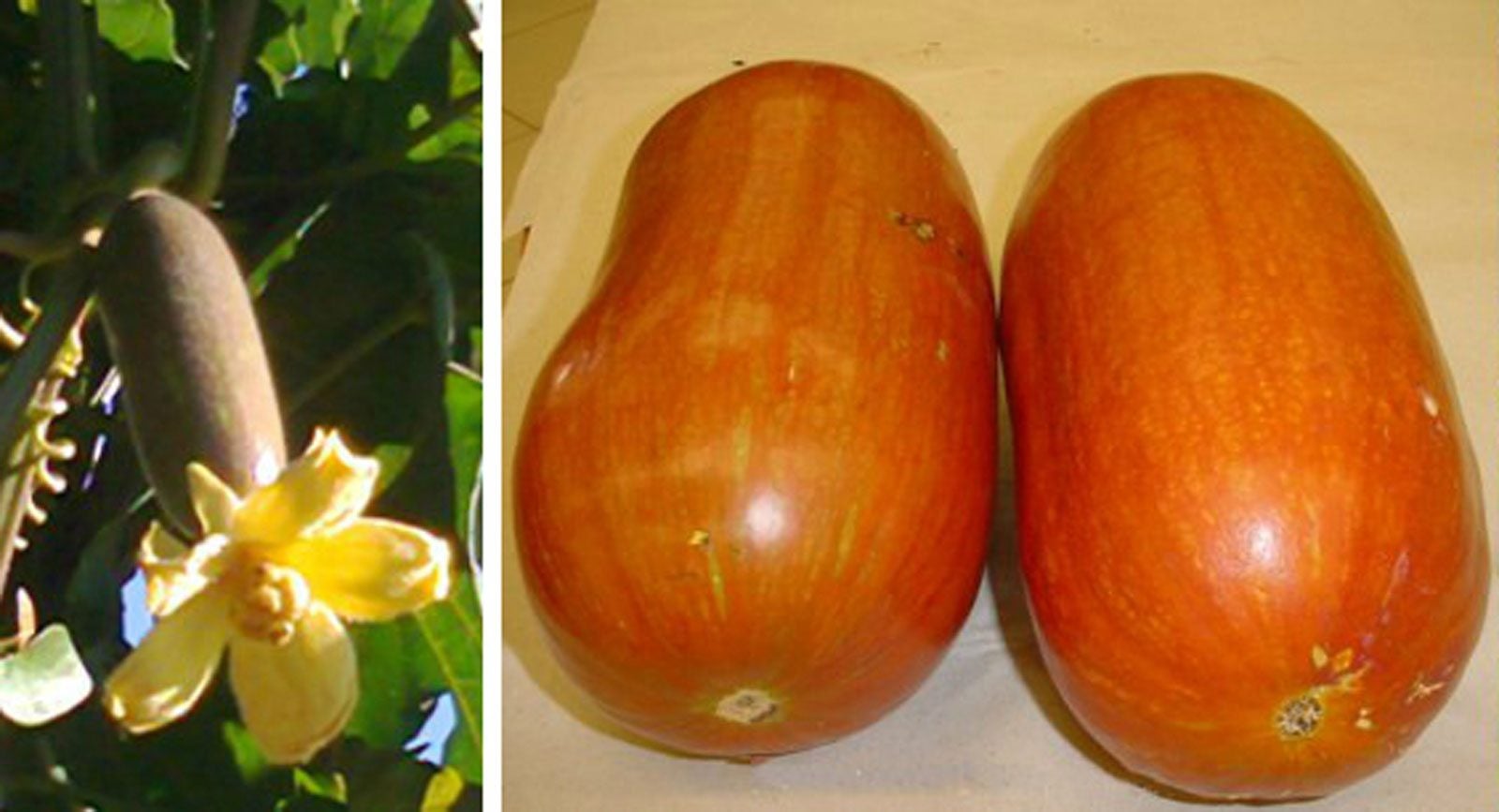What Is Cassabanana – How To Grow Cassabanana Plants


If you have some space outside, a long, warm growing season, and a hankering for new fruit, cassabanana is the plant for you. Producing long, ornamental vines and huge, sweet, fragrant fruit, it’s a great addition to your garden and an interesting conversation piece. Keep reading to learn more about how to grow cassabanana plants.
What is Cassabanana?
The cassabanana (Sicana odorifera) is not, as the name suggests, a banana. It’s actually a type of gourd. The fruit, however, is very similar to a melon. Cassabanana fruits grow to about 2 feet (61 cm.) long and 5 inches (13 cm.) thick and are nearly perfect, sometimes curved, cylinders. The skin can be red, maroon, purple, or even black, and is thick enough that it has to be hacked open with a machete. Inside, however, the yellow flesh is very similar in taste and texture to that of a cantaloupe. The smell, which is very strong even before the fruit has been cut, is sweet and pleasant. Interestingly, it is often placed in closets and around houses as an air sweetener and moth deterrent.
How to Grow Cassabanana Plants
Growing cassabanana plants are native to Brazil and are now grown throughout South America, Central America, and the Caribbean. If you start it very early indoors, however, you may have success growing it as far north as USDA zone 6. The main problem in temperate zones is giving the fruits enough time to ripen before the first frost. Prior to sowing seeds, it helps to soak them first. Plant them about an inch deep (2.5 cm.) and give them a bright, sunny location. The plants should germinate fairly quickly. Once all danger of frost has passed, the plants can be moved outdoors in full sun. It can also be grown indoors in areas outside their hardiness zone. The cassabanana plant is a single vine that can grow to 50 feet (15 m.) in length. The vine produces tendrils with suction-cup like discs that allow it to climb almost any surface. It will climb a tree with ease, but there is a very real danger that it will suffocate and kill the tree. The best option is to let it climb a very sturdy trellis or arbor. Keep the plants moist throughout the growing season. You can fertilize with a balanced feed or compost once they get a little more growth to them, if desired.
Gardening tips, videos, info and more delivered right to your inbox!
Sign up for the Gardening Know How newsletter today and receive a free copy of our e-book "How to Grow Delicious Tomatoes".

The only child of a horticulturist and an English teacher, Liz Baessler was destined to become a gardening editor. She has been with Gardening Know how since 2015, and a Senior Editor since 2020. She holds a BA in English from Brandeis University and an MA in English from the University of Geneva, Switzerland. After years of gardening in containers and community garden plots, she finally has a backyard of her own, which she is systematically filling with vegetables and flowers.
-
 10 Common Composting Problems That Can Spoil Your Garden Gold – Plus Easy Fixes
10 Common Composting Problems That Can Spoil Your Garden Gold – Plus Easy FixesLearn how to troubleshoot common composting issues before they ruin your stash – from bad smells and bugs to materials not breaking down as they should.
By Susan Albert
-
 Terrifically Tubular Flowers For Hummingbirds: 9 Tube-Flowered Plants To Attract Hummers
Terrifically Tubular Flowers For Hummingbirds: 9 Tube-Flowered Plants To Attract HummersGrowing tubular flowers for hummingbirds helps you create the optimum feeding conditions for your winged friends. Here are nine tubed delights for hummers
By Tonya Barnett